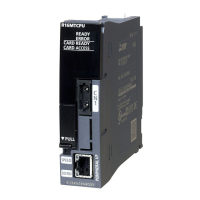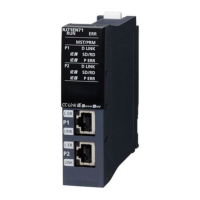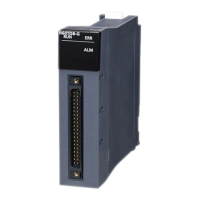16 RAS FUNCTIONS
16.2 Event History Function
141
16
■When files are created
An event history file is created when:
• The CPU module is turned off and on (if there is no event history file or after the event history settings are changed).
• The CPU module is reset (if there is no event history file or after the event history settings are changed).
• Initialization of the SD memory card (when no event history file exists)
*1
*1 When a parameter is stored in the data memory, the event history file is created on the SD memory card, according to the event history
setting.
The following table shows how the event history is treated depending on operation.
Indicates the operation of the event history for the SD memory which was removed and mounted in the case that the save
destination memory is the memory card (SD memory card).
■When parameters take effect
Any changed parameters take effect when:
• The CPU module is powered on
• The CPU module is reset
Any changed parameters written in the storage memory with the CPU module in the STOP state does not take
effect when the CPU module operating state is changed from STOP to RUN. In this case, the changed
parameters will take effect the next time when the CPU module is turned off and on or reset.
Loss of event history information
If events are detected frequently, some events may be lost without being collected. When event loss occurs, "*HST.LOSS*"
appears in the "Event Code" field of the engineering tool.
Operation Operation for the event history
Memory initialization When this event occurs, the event history is stored into the internal memory. If the internal memory reaches the
maximum number of event history records it can store, all subsequent events are lost (Page 141 Loss of
event history information)
Event history creation The event history, which has been stored in the internal memory during absence of the event history file, is stored
into the data memory or the SD memory card (If any event was lost, it is logged as "*HST.LOSS*").
Operation Operation for the event history
Removal of the SD memory card When this event occurs, the event history is stored into the internal memory. If the internal memory reaches the
maximum number of event history records it can store, all subsequent events are lost (Page 141 Loss of
event history information)
Installation of the SD memory card The event history, which have been stored in the internal memory during absence of the SD memory card, is
stored to the SD memory card. If the re-inserted SD memory card contains an event history file of the same file
size, the CPU module continues to store the event history information. If the file size is different, the CPU module
removes the existing event history file and creates a new event history file.

